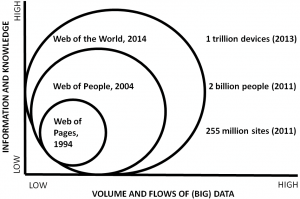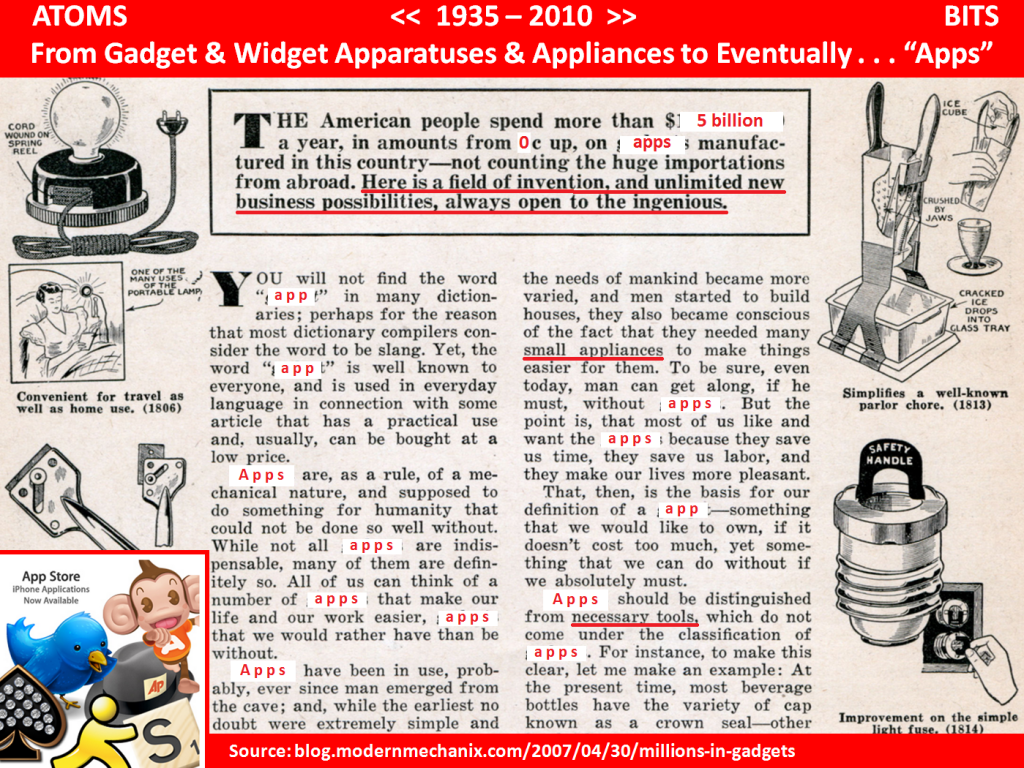Gadgets Explained
By Jaap Bloem
The term gadget may refer to a vast number of remarkable products which are totally different in nature. Gadgets can only be defined by a spectrum of partly contradictory properties. In alphabetical order they range from cheap, common, complex, digital, electric, electronic, ergonomic, expensive, eye-catching, fashionable, fun, functional, handy, iconic, ingenious, innovative, ironic, mechanical, micro-electronic, necessary, physical, practical, secret, serious, silly, simple, small, smart, technical, unique, unnecessary to virtual. It is not unusual to call the newest Ferrari sports car a gadget but the qualification equally applies to a kichen appliance and to all kinds of funny or smart accessories. The world of espionage and secret agents used to be the classic example of gadgetry. Since the rise of so-called app stores however, the prominent focus is on the combination of mobile multi-touch devices, we might as well call TAFKAPP (The Apparatus Formerly Known As PC/Phone), and the software functionalities (aka gadgets, widgets and apps) we dress them up with in the context of the emerging Web of the World, being the next phase beyond the Web of Pages and the Web of People. This demonstrates that biologically speaking the gadgets domain resorts immediately under human life itself.

Gadgets for daily personal use represent substantial economic value. Gadgets like smartphones and laptops are an unavoidable part of stock trading. Along with having an efficient gadget, a trustworthy online broker is also important. They will make the investor’s job much easier. Take the online broker test to find the best online brokers for your investment. In the United States of the 1930s, interestingly the Great Depression period, Americans spent 100 million dollar a year on mass-produced mechanical and electrical gadgets. Nowadays, the yearly worldwide spend on virtual gadgetry just in app stores equals 5 billion dollar. This virtualisation is a sea change: it means that only now the impact of gadgets, and for that matter widgets and apps – clearly recognizable and appealing real-life software functionalities, activated from an icons or tiles interface, on a screen device of choice – will be experienced in full, as a natural development of a main domain in human life.
The word gadget originates from the 19th century and already then the term referred to yet another novelty the name of which one did not know or could not recall. After World War I, just before the economic and cultural uprise of the Roaring Twenties, the popular use of the word gadget started to increase in the United States. In de years preceding World War II, gadgets predominantly were cheap, functional, ingenious, physical and technical. Since the nineties, with a focus on micro-electronics and mainly on mobile phones, the qualificators have expanded to common, complex, ergonomic, expensive, fashionable, fun, functional, handy, ingenious, innovative, micro-electronic, necessary, physical, practical, simple, small and technical, an increase from 5 to 15 over 60 years. A remarkable parallel between past and present can be demonstrated by changing the term gadget(s) into app(s) in an article of the trend magazine Everyday Science and Mechanics of February 1935.







